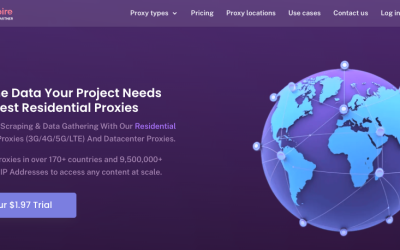You’re ready to take your multilingual website to the next level. Don’t let poor SEO hold you back. Learn how to optimize your URL structure, tackle translation, and beat duplicate content issues.
Discover the power of automatic redirects and effective language selection. By the end of this article, you’ll know how to boost your site’s visibility on global search engines.
Let’s dive in and unlock your website’s full potential.
Key Takeaways
- Well-structured URLs and clear regional targeting can enhance user experience and indexing.
- Accurate translation and optimization of content are crucial for effective communication and SEO strategy.
- Duplicate content can lead to penalties from search engines, so it should be avoided.
- Automatic redirects and language selection methods should be used carefully to maintain visibility and accessibility for users and search engines.
Rankstar – A Valuable SEO Partner for Your Business
→ Ready to take your multilingual website’s SEO to the next level?
Explore our latest article on Rankstar! Discover the strategies and insights to make your website a global success. Don’t miss out on the chance to expand your reach and enhance your SEO game. Read the full article now and unlock the power of multilingual SEO!
We are also here to propel your brand to the summit of search rankings, ensuring its outstanding prominence in both Autocomplete Suggestions and Autosuggest Removal when in need.

Understanding the Importance of URL Structure and Regional Targeting
You’ll find that a well-structured URL not only enhances user experience but also informs search engines about your content, boosting your multilingual website’s SEO. Think of your URL as a roadmap to your website’s content. When it’s clear and concise, users and search engines can navigate it easily.
Don’t forget about regional targeting. Using separate domains or country code top-level domains (ccTLDs) assists with clear regional targeting. Alternatively, subdirectories with a generic top-level domain (gTLD) centralize your hosting and SEO efforts.
Be careful with subdomains, though. While they can improve website speed, they might confuse your users.
Mastering the art of URL structure and regional targeting is a vital step in optimizing your multilingual website.
The Art of Content Translation and Optimization
In your quest for a well-optimized, translated content, it’s essential to retain context and SEO parameters without losing the original meaning. This task isn’t always easy, but there are a few strategies you can use to make it more manageable:
- Avoid Literal Translations: They often weaken your content and SEO strategy. Make sure your translations convey the same message as the original content, even if the wording isn’t exactly the same.
- Proofread Carefully: An accurate translation is crucial for effective communication. Don’t skip this step.
- Be Mindful of Cultural Differences: Pay attention to date and time formats, units of measurement, cultural references, and currency.
- Optimize Non-Visible Elements: Don’t forget to use multilingual keywords and optimize elements like meta descriptions and image alt tags. They’re equally important for SEO!
Addressing Duplicate Content Issues in Multilingual SEO
Dealing with duplicate content issues is another crucial part of a successful multilingual SEO strategy, as multiple URLs containing the same content can be perceived as separate pages by search engines. This can dilute your site’s relevancy and potentially lead to penalties. You’ve got to ensure that you’re using canonical tags correctly. These handy little helpers tell search engines which version of a URL you want to appear in search results, avoiding confusion.
Furthermore, don’t forget to manage your hreflang tags. They signal to search engines the language you’re using on a specific page, ensuring the right content reaches the right audience.
SEO isn’t just about keywords and backlinks, it’s about smart management of your content. Get on top of your duplicate content issues and watch your multilingual SEO thrive.
Navigating Automatic Redirects and Language Selection
Navigating automatic redirects and language selection can feel like a minefield, but it’s crucial for ensuring users and search engines can access different versions of your site. Here are some strategies to help you:
- Avoid excessive automatic redirects: They can block visibility and accessibility, confusing both users and search engines.
- Use dropdown menus or language flags: This offers users a clear and straightforward way to choose their preferred language version.
- Ensure search engines can crawl and index all versions: This ensures your content gets the visibility it deserves in all languages.
- Use native language names or ISO 639 codes in your language selector: This avoids confusion and makes it clear for your users.
With these tips, you’re well on your way to boosting your multilingual site’s SEO.
Implementing Effective Language Selectors for Improved Usability and SEO
You’ll find that implementing effective language selectors not only improves usability for your users but also optimizes your site for search engines.
Remember, it’s not just about choosing a language, it’s about creating a seamless experience for your users.
Don’t use national flags as selectors, because they represent countries, not languages. Instead, use native representations or ISO 639 codes.
This ensures that your users can easily navigate your site, enhancing their overall experience. It also allows search engines to crawl and index all language versions of your site, boosting your SEO efforts.
Frequently Asked Questions
What Are Some Common Mistakes to Avoid When Creating a Multilingual Website’s SEO Strategy?
Avoid common errors like poor URL structure and literal translations, which can damage your SEO strategy. Be wary of duplicate content, excessive automatic redirects, and inappropriate language selectors. Always ensure accurate translation and proofreading.
How Can I Track the Performance of My Multilingual Website’s Seo?
You can track your multilingual website’s SEO performance by using tools like Google Analytics. It’ll show traffic sources, user locations, and keywords. Also, use Google Search Console for indexation issues and organic traffic.
How Can Social Media Platforms Support a Multilingual Website’s SEO Efforts?
Social media platforms can boost your multilingual website’s SEO by driving traffic, increasing visibility, and enhancing user engagement. It’s crucial to share content in various languages to reach and resonate with your diverse audience.
What Are the Benefits and Drawbacks of Using Translation Plugins for Multilingual Website Content?
Translation plugins can quickly convert your website’s content into multiple languages, enhancing accessibility. However, they’re often inaccurate and can miss cultural nuances. You’re risking quality, which could negatively impact user experience and your SEO efforts.
How Can I Improve the Mobile SEO for My Multilingual Website?
To enhance your multilingual website’s mobile SEO, optimize your website’s speed, ensure it’s mobile-friendly, use hreflang tags correctly, and avoid automatic redirects. Additionally, keep your language selection user-friendly and visible on mobile view.
Conclusion
So, you’re all set to supercharge your multilingual website’s SEO. Remember, a well-structured URL and clear regional targeting are key.
Master the art of content translation and optimization, and tackle duplicate content issues head-on.
Navigate automatic redirects smartly and pick effective language selectors.
With these tips in your arsenal, your website is ready to shine globally.
Here’s to better visibility and a stellar user experience across all regions and languages!


















